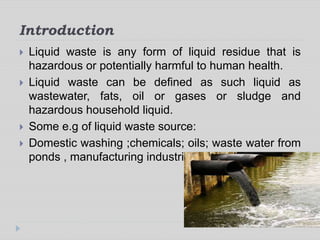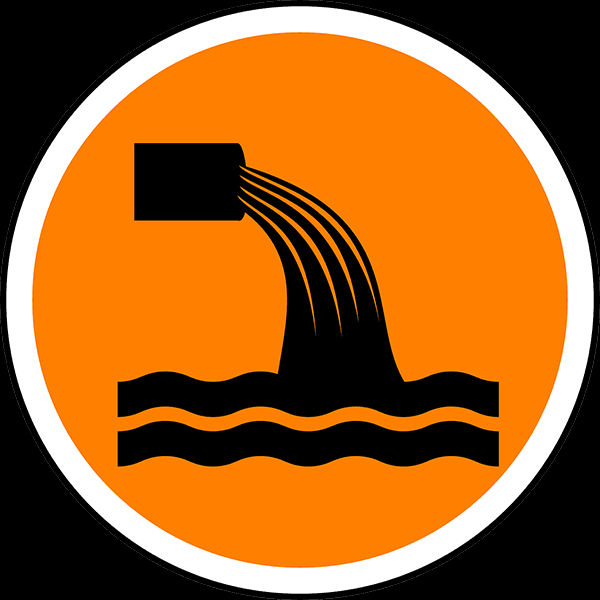Top Guidelines Of Reclaim Waste
Top Guidelines Of Reclaim Waste
Blog Article
The Ultimate Guide To Reclaim Waste
Table of Contents7 Easy Facts About Reclaim Waste ShownSome Known Details About Reclaim Waste Examine This Report about Reclaim WasteNot known Facts About Reclaim WasteThe Best Guide To Reclaim Waste
Explore the types, incidents, and types of fluid waste. Residential sewage waste refers to the waste and items from a residential sewage-disposal tank. This kind of waste is produced by humans in residences, colleges, and other structures. This only includes septic systems that have a drainpipe area. The correct management and disposal of residential sewage waste require liquid waste to be transferred to a sewer therapy plant where the correct approaches and equipment are put on purify and dispose of waste.
Business waste commonly includes possible risks, such as combustible materials or a blend of liquid and solid waste items, and needs an advanced and in-depth disposal procedure. The disposal of industrial waste generally includes the purification of waste prior to transportation to guarantee secure and appropriate disposal. Hazardous waste is created from by-products and drainage of commercial procedures and manufacturing.
This type of waste can not use the same sewer administration transport or procedures as septic or industrial fluids. The commercial waste monitoring procedure calls for the evaluation and testing of fluid waste before it goes through the disposal process (liquid waste disposal melbourne). Runoff waste is the liquid waste that comes from runoff and excess stormwater in extremely populated areas or cities
Runoff waste can trigger contamination and flooding if not managed effectively. Find out extra concerning sewage system cleansing and waste administration. Making certain appropriate waste management can prevent catastrophes and lower ecological injury. Both people in domestic settings and specialists in business or production markets can gain from understanding the procedures and guidelines of liquid waste management.
Indicators on Reclaim Waste You Should Know
Call PROS Providers today to discover about our waste monitoring and disposal solutions and the appropriate ways to take care of the fluid waste you create.
(https://www.domestika.org/en/reclaimwaste1)
This supposed 'wastewater' is not only a crucial resource but, after therapy, will be launched to our land, waterways or the ocean. Used water from commodes, showers, bathrooms, kitchen sinks, laundries and commercial processes is recognized as wastewater.

water made use of to cool equipment or clean plant and equipment). Stormwater, a kind of wastewater, is runoff that streams from agricultural and city areas such as roof coverings, parks, gardens, roadways, courses and seamless gutters right into stormwater drains pipes, after rain. Stormwater flows unattended straight to regional creeks or rivers, eventually reaching the sea.
An Unbiased View of Reclaim Waste
In Queensland, many wastewater is treated at sewage treatment plants. Wastewater is delivered from residential or commercial sites through a system of drains and pump stations, known as sewage reticulation, to a sewer therapy plant.
The Department of Natural Resources suggests city governments regarding handling, operating and preserving sewerage systems and therapy plants. In unsewered locations, city governments may call for owners to mount private or house sewer treatment systems to treat residential wastewater from toilets, kitchens, bathrooms and laundries. The Department of Natural Resources authorises the use of family systems when they are visit the site shown to be efficient.
The majority of stormwater obtains no treatment. In some brand-new subdivisions, therapy of some stormwater to remove trash, sand and gravel has actually begun making use of gross pollutant catches. Wastewater treatment takes place in four phases: Eliminates strong matter. Larger solids, such as plastics and various other objects incorrectly released to drains, are eliminated when wastewater is travelled through screens.
Wastewater after that flows into huge storage tanks where solids settle and are gotten rid of as sludge. Grease and residue are skimmed from the surface. Utilizes little living organisms called micro-organisms to break down and remove remaining dissolved wastes and great fragments. Micro-organisms and wastes are integrated in the sludge. Gets rid of nitrogen and phosphorus nutrients that might trigger algal blooms in our waterways and intimidate marine life.
Reclaim Waste Things To Know Before You Get This
Nutrient removal is not offered at all sewer therapy plants since it needs expensive specialized tools. Clear fluid effluent created after treatment might still have disease-causing micro-organisms - liquid waste removal melbourne.

This normally implies wastewater has to be dealt with or impurities eliminated prior to it can be released to waterways. Many wastewater moves right into the sewerage system. Under the Act, neighborhood federal governments administer authorizations and permits for environmentally pertinent activities (ERAs) entailing wastewater releases that could have a regional impact. The division provides approvals and permits to ERAs entailing wastewater releases that may have a regional or statewide influence.
Reclaim Waste - Truths
Tracking offers accurate info regarding water quality and can confirm that licence conditions are being satisfied. The info gotten through monitoring provides the basis for making water top quality decisions.
Report this page